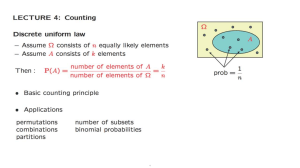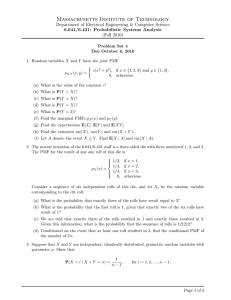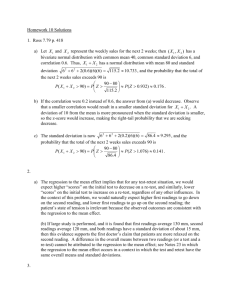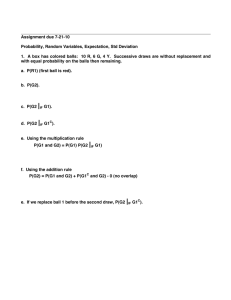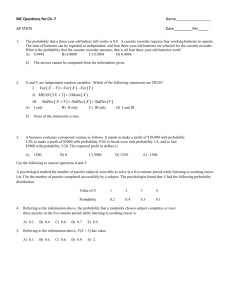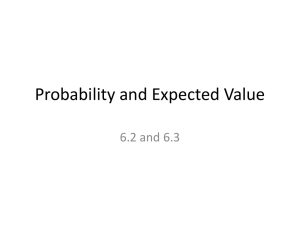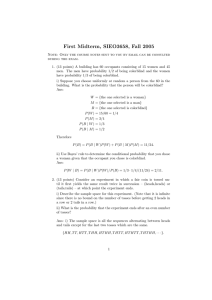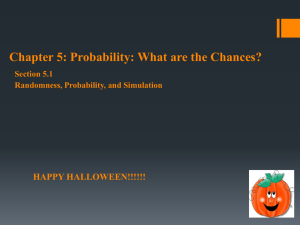For questions 6 and 7, refer to the following
advertisement
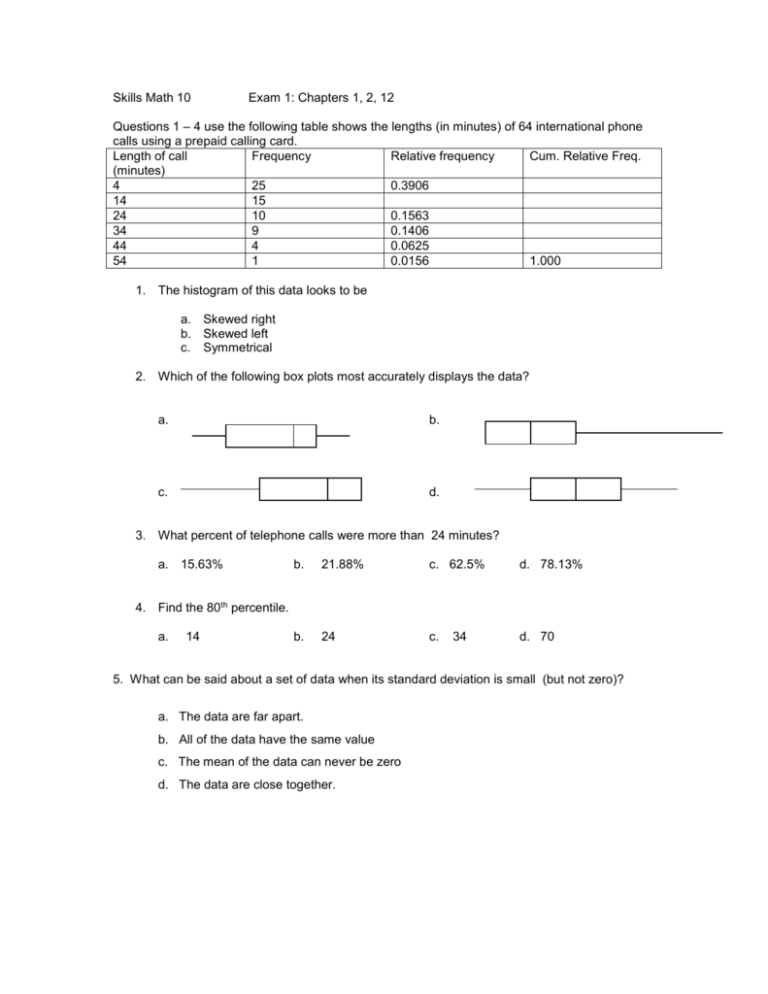
Skills Math 10 Exam 1: Chapters 1, 2, 12 Questions 1 – 4 use the following table shows the lengths (in minutes) of 64 international phone calls using a prepaid calling card. Length of call Frequency Relative frequency Cum. Relative Freq. (minutes) 4 25 0.3906 14 15 24 10 0.1563 34 9 0.1406 44 4 0.0625 54 1 0.0156 1.000 1. The histogram of this data looks to be a. Skewed right b. Skewed left c. Symmetrical 2. Which of the following box plots most accurately displays the data? a. b. c. d. 3. What percent of telephone calls were more than 24 minutes? a. 15.63% b. 21.88% c. 62.5% d. 78.13% b. 24 c. d. 70 4. Find the 80th percentile. a. 14 34 5. What can be said about a set of data when its standard deviation is small (but not zero)? a. The data are far apart. b. All of the data have the same value c. The mean of the data can never be zero d. The data are close together. For questions 6 and 7, refer to the following A sample of De Anza students was taken to determine pulse rate. The data is shown: pulse rate–beats per minute 54 58 65 68 72 76 80 90 98 frequency (# of students) 1 3 6 8 5 3 8 4 2 6. Find the median and mode(s). a. 72, 68 and 80 b. 72 and 80 c. 76 and 68 d. 76, 68 and 80 7. Out of the entire De Anza population of 24,000 students, approximately what percent of students are expected to have a pulse rate of 65? a. 6 b. 40 c. 9 d. 15 For questions 8 and 9, refer to the following By determining the average number of people in a car using the "Diamond" Carpool Lane, the California Highway Patrol is trying to decide if the number of people in a car using the "Diamond" Carpool Lane should be increased from 2 to 3. 8. The average number of people per car for all cars using the "Diamond" Carpool Lane is called the a. parameter b. data c. variable d. statistic c. variable d. statistic 9. The number of people in 1 car is called the a. parameter b. data 10. I toss a fair coin a large number of times. Assuming the tosses are independent, which of the following is true? a. Once the number of flips is large enough, the number of heads will always be exactly half of the total number of tosses. For example, after 10,000 tosses I should have exactly 5,000 heads. b. The proportion of heads will be about 1/2 and this proportion will tend to get closer to 1/2 as the number of tosses increases. c. As the number of tosses increases, any long run of heads will be balanced by a corresponding run of tails so that the overall proportion of heads is exactly 1/2. d. All of the above. For questions 11 - 13, refer to the following. A sample of twenty people went on a cruise to Alaska. Their two-week weight gain is shown below (a weight loss is shown by a negative number.) Weight Gain Frequency 4 -2 0 2 5 9 5 8 2 1 11.The middle 50% of the data is between ________ and _________. a. 0 and 2 b. 0 and 9 d. –2 and 2 c. 2 and 9 12. Find the average weight gain (in pounds). a. 1.35 b. 2.74 c. 2 d. There is not enough information. 13. What weight gain is 3 standard deviations above the mean (in pounds)? a. 4.05 b. 8.19 c. 9.57 d. There is not enough information For questions 14 - 19, use the following information. Kim, a personal trainer, was interested in whether or not there was a linear relationship between the number of visits her clients made to the gym each week and the average amount of time her clients exercised per visit. She took the following data. Client Number of visits per week Average time spent exercising per visit (hours) 1 1 2 2 3 1.5 3 4 1 4 2 2 5 3 1 6 5 0.30 14. The line that best fits the data is A. C. ŷ = -0.44 + 2.62 x B. ŷ = 2.62 + 0.44 x D. ŷ = 0.44 + 2.62 x ŷ = 2.62 - 0.44 x 15. Is the correlation coefficient significant? A. C. Yes It might be. B. D. No Not enough information is given. 16. Using the best fit line, estimate the average time spent exercising per visit for 4 visits per week. A. C. 2 hours 1 hour B. D. 0.86 hours 10.04 hours 17. Kim used the best fit line to estimate the average time spent exercising per visit for her client Toby who visited the gym 7 times per week. Does the least squares line give an accurate estimate? A. C. Yes Maybe B. D. No Not enough information is given. 18. If the correlation coefficient is –1, which answer is correct? A. B. C. D. The slope of the best fit line is positive. The slope of the best fit line is –1. The data fit exactly on a line with positive slope. The data fit exactly on a line with negative slope. 19. A scatter plot shows A. B. C. D. the direction and strength of a relationship between the independent and dependent variables. that there is a linear relationship between the independent and dependent variables. how you can predict the dependent variable knowing the independent variable. nothing. The line of best fit is what is important. 20. Suppose we are interested in the average grade on the first math 10 test taken by all students at De Anza during the spring 2002 quarter. We randomly choose 3 students from each of the spring 2002 Math 10 classes as our sample. This sampling technique is A. systematic B. cluster C. stratified D. convenience 21. Tracy works at a local indoor soccer arena. He is interested in the proportion of people entering the area who spend money in the arena store. One night while he is working, Tracy counts the first 20 people who buy goods in the arena store. A. systematic B. cluster C. stratified D. convenience Answers: 1A, 2B, 3B, 4C, 5D, 6A, 7D, 8A, 9C, 10B, 11A, 12A, 13C, 14D, 15A, 16B, 17B, 18D, 19A, 20C, 21D

